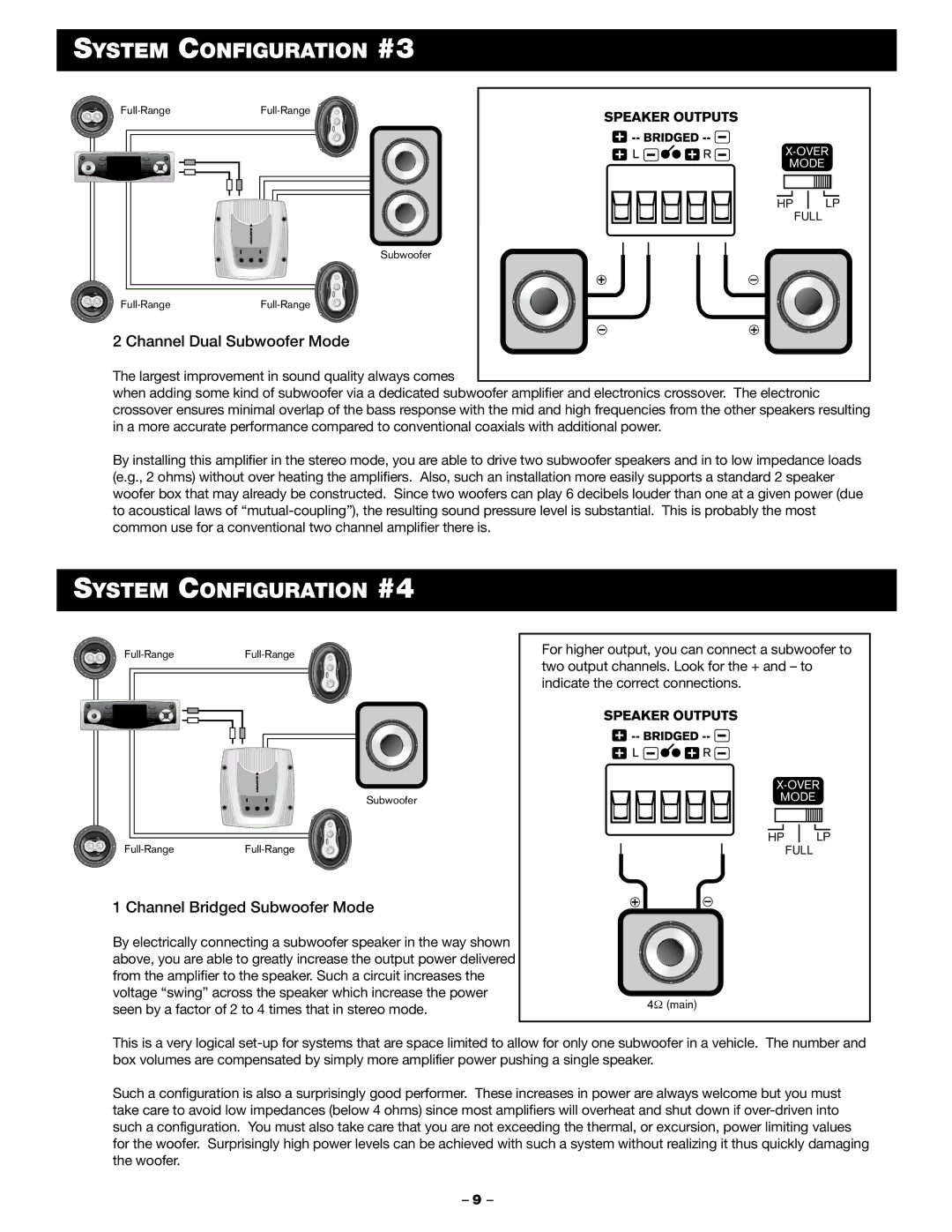
SYSTEM CONFIGURATION #3
MODE
|
|
|
|
HP |
| LP | |
FULL
Subwoofer
2 Channel Dual Subwoofer Mode
The largest improvement in sound quality always comes
when adding some kind of subwoofer via a dedicated subwoofer amplifier and electronics crossover. The electronic crossover ensures minimal overlap of the bass response with the mid and high frequencies from the other speakers resulting in a more accurate performance compared to conventional coaxials with additional power.
By installing this amplifier in the stereo mode, you are able to drive two subwoofer speakers and in to low impedance loads (e.g., 2 ohms) without over heating the amplifiers. Also, such an installation more easily supports a standard 2 speaker woofer box that may already be constructed. Since two woofers can play 6 decibels louder than one at a given power (due to acoustical laws of
SYSTEM CONFIGURATION #4
Subwoofer
1 Channel Bridged Subwoofer Mode
By electrically connecting a subwoofer speaker in the way shown above, you are able to greatly increase the output power delivered from the amplifier to the speaker. Such a circuit increases the voltage “swing” across the speaker which increase the power seen by a factor of 2 to 4 times that in stereo mode.
For higher output, you can connect a subwoofer to two output channels. Look for the + and – to indicate the correct connections.
MODE
|
|
|
|
HP |
| LP | |
FULL
4Ω (main)
This is a very logical
Such a configuration is also a surprisingly good performer. These increases in power are always welcome but you must take care to avoid low impedances (below 4 ohms) since most amplifiers will overheat and shut down if
– 9 –
